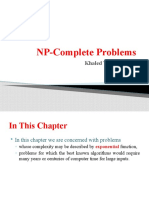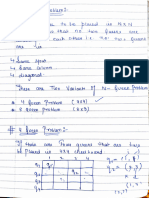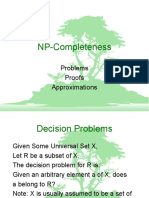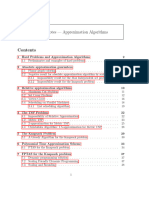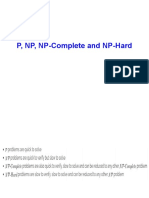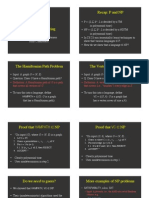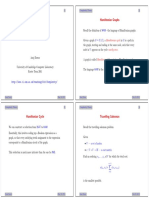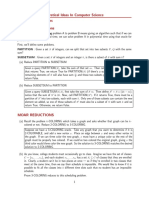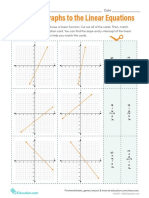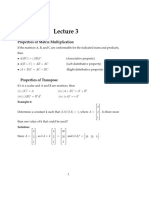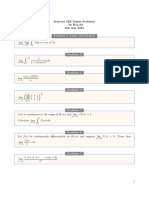0% found this document useful (0 votes)
19 views47 pagesLecture 3
The document discusses NP and NP-Complete problems, focusing on various graph-related problems such as Euler tours, Hamiltonian cycles, and 3-dimensional matching. It also covers polynomial-time reductions, graph coloring, and applications in register allocation and 5G networks, along with notable theorems like 3-SAT reducing to 3-colorability and subset sum. Additionally, it touches on the Millennium Prize Problems, particularly the P vs NP question, and acknowledges sources of the content.
Uploaded by
prasuk0129Copyright
© © All Rights Reserved
We take content rights seriously. If you suspect this is your content, claim it here.
Available Formats
Download as PDF, TXT or read online on Scribd
0% found this document useful (0 votes)
19 views47 pagesLecture 3
The document discusses NP and NP-Complete problems, focusing on various graph-related problems such as Euler tours, Hamiltonian cycles, and 3-dimensional matching. It also covers polynomial-time reductions, graph coloring, and applications in register allocation and 5G networks, along with notable theorems like 3-SAT reducing to 3-colorability and subset sum. Additionally, it touches on the Millennium Prize Problems, particularly the P vs NP question, and acknowledges sources of the content.
Uploaded by
prasuk0129Copyright
© © All Rights Reserved
We take content rights seriously. If you suspect this is your content, claim it here.
Available Formats
Download as PDF, TXT or read online on Scribd
/ 47













